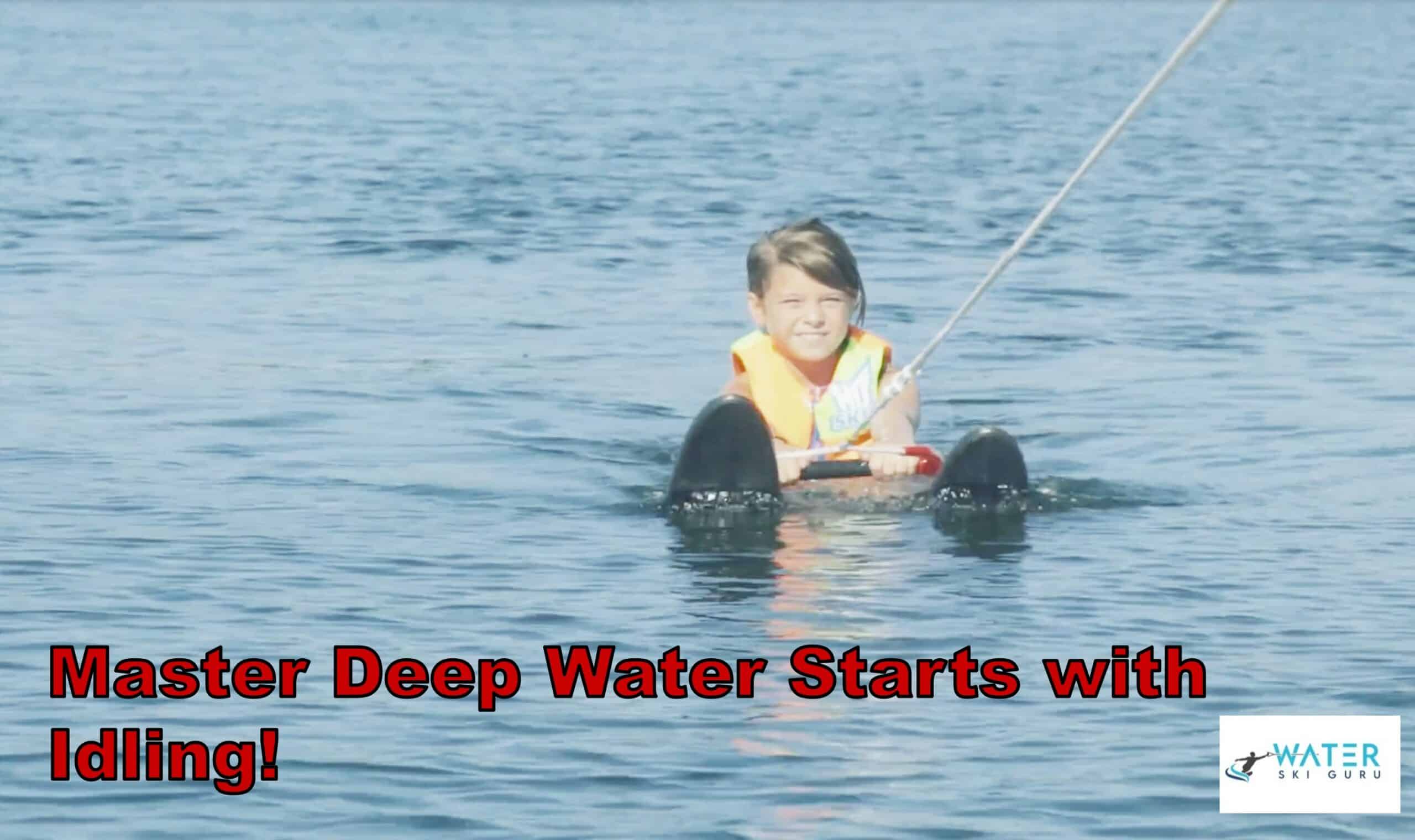I remember the first time I tried to water ski. I was nervous and unsure, and my deep water starts were anything but smooth. It wasn’t until I learned to idle that I truly began to master this essential skill.
Idling may seem like a simple technique, but it can make all the difference in the world when it comes to conquering the water turbulence and executing a perfect start.
If you’re struggling to get up on your skis, don’t worry – you’re not alone. Deep water starts can be intimidating for even the most experienced skiers. But with the right mindset, a little bit of practice, and the power of idling, you can take your skills to the next level and start nailing those starts every time.
In this article, I’ll explore the concept of idling and how it can help you become a more confident and successful water skier.
Learning to Idle
I’ve learned that to master deep water starts, I need to learn to idle through the water for an extended period of time. This is because timing is the real problem, not water turbulence itself.
Many struggling learner skiers make the common mistake of trying to take off too soon, which results in them falling or being pulled off balance. The proper technique is to idle through the water, getting accustomed to water turbulence, until the driver or observer chooses the perfect moment to take off.
Practicing idling through the water can be performed as a training drill, helping skiers to patiently wait until they’ve regained the perfect position for takeoff. By learning to idle, I’ve been able to nail all of my deep water starts and it has become an essential technique in my water skiing repertoire.
Check out this video about how to do a deep water start.
Benefits of Idling
Practicing through water turbulence for extended periods can help me patiently wait for the perfect moment to take off during a deep water start. By idling through the water, I can improve my stability and build confidence in handling water turbulence. This technique is particularly helpful for struggling skiers who find it difficult to time their start due to water turbulence.
To get the most out of idling, I can follow these steps:
- Start by powering up and getting into position for a deep water start.
- Once ready, I can idle through the water for an extended period of time, getting accustomed to the water turbulence.
- During idling, I can practice maintaining my balance and keeping the handle close to my body.
- While idling, I can communicate with the driver or observer to ensure that I’m in the perfect position for takeoff.
By practicing idling regularly, I can build my confidence and improve my stability, making it easier to nail all my deep water starts.
Idling through water turbulence is a useful technique for building confidence and improving stability during deep water starts. By regularly practicing idling, I can patiently wait for the perfect moment to take off and enjoy a smooth ride on the water.
Additional Resources
I can further my understanding of water skiing techniques by exploring the additional resources offered by Virtual Water Ski Coach. They provide an exceptional video coaching service that can help me improve my skills in deep water starts. With this service, I can receive expert advice and feedback on my technique to help me identify areas for improvement.
Additionally, their free water ski workout guide is an excellent resource for staying in shape and improving my overall performance on the water. The video coaching service offered by Virtual Water Ski Coach is a great way to receive personalized feedback on my deep water start technique. By analyzing my performance, the coach can provide me with tips and tricks that can help me perfect my form and timing.
Furthermore, the free water ski workout guide is an excellent resource for staying in shape and improving my performance on the water. By following the guide, I can build strength, endurance, and agility, which will help me execute my deep water start with greater ease and precision.
In conclusion, exploring these additional resources can help me become a better water skier and master the art of deep water starts.
Frequently Asked Questions
What should I wear when water skiing?
When water skiing, it’s important to consider both fashion and function. Choosing the right wetsuit can ensure comfort and protection from the elements. I recommend a snug fit for optimal performance.
How do I properly adjust my bindings for water skiing?
I ensure proper foot placement and binding tightness for optimal water ski performance. First, check for correct size and adjust as needed. Then, secure bindings snugly, but not too tight. Test on land before hitting the water.
What is the best type of water ski for beginners?
When choosing a water ski as a beginner, consider your weight and skill level. Ski length is key. Protective gear is also important to prevent injury. As a passionate skier, I recommend taking lessons to master your technique.
How often should I replace my water ski rope?
Replacing your water ski rope depends on factors like frequency of use, exposure to UV rays, and proper storage. Regular maintenance, such as rinsing and storing out of sunlight, can extend its lifespan. It’s crucial to prioritize rope maintenance to ensure your safety and performance on the water.
Can I water ski in rough or choppy conditions?
When skiing in rough or choppy waters, balance and timing are crucial. Techniques include keeping knees flexible, leaning back, and keeping arms straight. With practice, you can master these skills and conquer any conditions.

